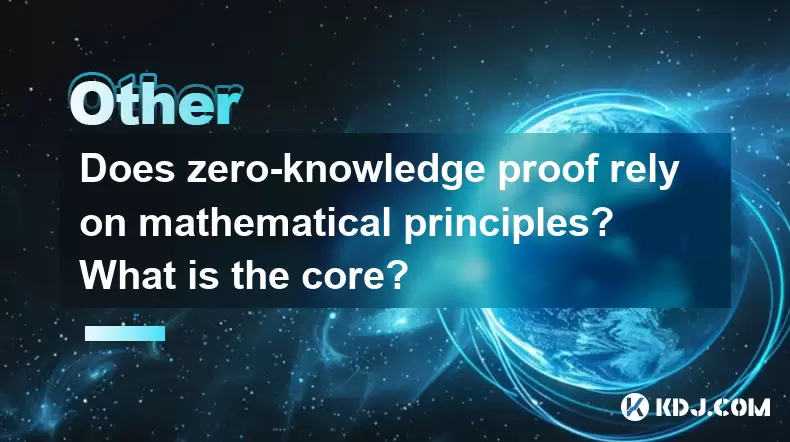-
 Bitcoin
Bitcoin $115200
-2.68% -
 Ethereum
Ethereum $3601
-5.16% -
 XRP
XRP $3.035
-2.96% -
 Tether USDt
Tether USDt $0.9997
-0.04% -
 BNB
BNB $764.5
-5.43% -
 Solana
Solana $168.1
-5.92% -
 USDC
USDC $0.9998
-0.02% -
 Dogecoin
Dogecoin $0.2090
-4.80% -
 TRON
TRON $0.3272
-0.49% -
 Cardano
Cardano $0.7306
-5.00% -
 Hyperliquid
Hyperliquid $39.16
-12.22% -
 Stellar
Stellar $0.3967
-4.96% -
 Sui
Sui $3.566
-5.95% -
 Chainlink
Chainlink $16.55
-6.57% -
 Bitcoin Cash
Bitcoin Cash $552.3
-3.90% -
 Hedera
Hedera $0.2516
-4.69% -
 Avalanche
Avalanche $21.99
-5.75% -
 Toncoin
Toncoin $3.621
-0.28% -
 Ethena USDe
Ethena USDe $1.000
-0.03% -
 UNUS SED LEO
UNUS SED LEO $8.951
0.02% -
 Litecoin
Litecoin $105.9
-3.59% -
 Shiba Inu
Shiba Inu $0.00001232
-5.00% -
 Polkadot
Polkadot $3.640
-5.55% -
 Uniswap
Uniswap $9.048
-7.03% -
 Monero
Monero $301.8
-1.51% -
 Dai
Dai $0.9999
-0.01% -
 Bitget Token
Bitget Token $4.334
-3.66% -
 Pepe
Pepe $0.00001064
-6.17% -
 Cronos
Cronos $0.1367
-5.78% -
 Aave
Aave $259.2
-4.59%
Does zero-knowledge proof rely on mathematical principles? What is the core?
Zero-knowledge proofs rely on number theory and computational complexity to enable private, secure transactions in cryptocurrencies like Zcash, using zk-SNARKs and zk-STARKs.
May 18, 2025 at 03:49 am

Introduction to Zero-Knowledge Proofs
Zero-knowledge proofs are a fascinating concept within the realm of cryptography, particularly relevant to the cryptocurrency world due to their ability to enhance privacy and security. At their core, zero-knowledge proofs enable one party to prove to another that a given statement is true, without revealing any information beyond the validity of the statement itself. This raises an intriguing question: does zero-knowledge proof rely on mathematical principles, and what is the core of this technology?
The Mathematical Foundation of Zero-Knowledge Proofs
Zero-knowledge proofs indeed rely heavily on mathematical principles. The core of zero-knowledge proofs is rooted in number theory and computational complexity theory. These proofs utilize complex mathematical constructs to ensure that the verifier can be convinced of the truth of a statement without learning anything else about the statement.
The foundational principle behind zero-knowledge proofs is the concept of interactive proof systems. In these systems, a prover (P) and a verifier (V) engage in a series of interactions. The prover aims to convince the verifier of the truth of a statement, while the verifier checks the prover's claims without gaining any additional information. This interaction is governed by rigorous mathematical protocols that ensure the security and privacy of the process.
Key Mathematical Concepts in Zero-Knowledge Proofs
Several key mathematical concepts underpin zero-knowledge proofs:
Completeness: This principle states that if the statement is true, the honest prover will convince the honest verifier with high probability. Mathematically, this is expressed as the probability of successful verification approaching 1 as the number of interactions increases.
Soundness: This ensures that if the statement is false, no cheating prover can convince the honest verifier. Soundness is crucial for maintaining the integrity of the proof system, and it is quantified by the probability that a cheating prover can deceive the verifier, which should be negligible.
Zero-Knowledge: The most distinctive feature of these proofs is that the verifier learns nothing beyond the truth of the statement. This is achieved through a simulation paradigm where any interaction between the prover and verifier can be simulated without the actual statement, ensuring that no additional information is leaked.
Practical Applications in Cryptocurrencies
In the context of cryptocurrencies, zero-knowledge proofs have been instrumental in enhancing transaction privacy and security. For instance, Zcash leverages zero-knowledge proofs to enable private transactions, where the sender, receiver, and transaction amount are obscured from public view. The core of this implementation lies in the zk-SNARKs (Zero-Knowledge Succinct Non-Interactive Argument of Knowledge), which are a specific type of zero-knowledge proof that can be verified quickly and without interaction.
The use of zk-SNARKs in Zcash demonstrates how zero-knowledge proofs can be applied in a real-world setting. The mathematical principles behind zk-SNARKs involve elliptic curve cryptography and polynomial commitments, which allow for the creation of proofs that are both succinct and non-interactive, making them highly efficient for blockchain applications.
The Role of Computational Complexity
Computational complexity theory plays a crucial role in zero-knowledge proofs. The efficiency and security of these proofs depend on the computational resources required to perform them. NP-completeness is a key concept here, as zero-knowledge proofs are often designed to prove statements that are in NP (nondeterministic polynomial time).
The idea is that if a problem is in NP, there exists a polynomial-time algorithm for verifying a solution, but finding the solution might be computationally hard. Zero-knowledge proofs exploit this asymmetry, allowing a prover to demonstrate knowledge of a solution without revealing it, while the verifier can check the proof efficiently.
Implementation Challenges and Solutions
Implementing zero-knowledge proofs in cryptocurrencies is not without challenges. The computational overhead required to generate and verify these proofs can be significant, which is a critical consideration for blockchain networks that aim to maintain high transaction throughput.
To address this, researchers and developers have been working on optimizing zero-knowledge proof systems. For example, zk-STARKs (Zero-Knowledge Scalable Transparent ARguments of Knowledge) have been developed as an alternative to zk-SNARKs. zk-STARKs offer greater scalability and do not require a trusted setup, which is a potential vulnerability in zk-SNARKs. The mathematical principles behind zk-STARKs involve error-correcting codes and low-degree testing, which allow for the creation of proofs that are both efficient and secure.
Conclusion on the Core of Zero-Knowledge Proofs
The core of zero-knowledge proofs lies in their ability to leverage mathematical principles to achieve a delicate balance between privacy and verifiability. By utilizing concepts from number theory, computational complexity, and cryptography, zero-knowledge proofs enable secure and private transactions in cryptocurrencies. The ongoing development and optimization of these proofs continue to enhance their applicability and efficiency in the blockchain ecosystem.
Frequently Asked Questions
Q: How do zero-knowledge proofs enhance privacy in cryptocurrencies?
A: Zero-knowledge proofs enhance privacy in cryptocurrencies by allowing transactions to be verified without revealing sensitive information such as the sender, receiver, or transaction amount. This is achieved through the use of complex mathematical protocols that ensure the verifier learns nothing beyond the validity of the transaction.
Q: What are the main differences between zk-SNARKs and zk-STARKs?
A: The main differences between zk-SNARKs and zk-STARKs lie in their scalability, setup requirements, and underlying mathematical principles. zk-SNARKs require a trusted setup, which can be a potential vulnerability, while zk-STARKs do not. Additionally, zk-STARKs are more scalable and use different mathematical constructs such as error-correcting codes and low-degree testing.
Q: Can zero-knowledge proofs be used in other areas besides cryptocurrencies?
A: Yes, zero-knowledge proofs have applications beyond cryptocurrencies. They can be used in various fields such as secure voting systems, authentication protocols, and privacy-preserving data analysis, where the need to prove statements without revealing underlying data is crucial.
Q: How do zero-knowledge proofs ensure the soundness of a proof?
A: Zero-knowledge proofs ensure soundness through the principle that if the statement being proved is false, no cheating prover can convince the honest verifier. This is quantified by the probability of a cheating prover deceiving the verifier, which should be negligible, ensuring the integrity of the proof system.
Disclaimer:info@kdj.com
The information provided is not trading advice. kdj.com does not assume any responsibility for any investments made based on the information provided in this article. Cryptocurrencies are highly volatile and it is highly recommended that you invest with caution after thorough research!
If you believe that the content used on this website infringes your copyright, please contact us immediately (info@kdj.com) and we will delete it promptly.
- Cardano Price, Pi Network, and Crypto Presales: What's the Buzz?
- 2025-08-02 08:50:12
- XRP Fund Success: Teucrium CEO Reveals Trillions on the Horizon
- 2025-08-02 09:10:12
- Challenge Coins: More Than Just Collectibles – A Military Tradition
- 2025-08-02 08:30:12
- Under the Radar: Hunting for 100x Crypto Gems in a Pi Network World
- 2025-08-02 08:30:12
- Bitcoin, Solana, and Altcoin Season: What's Hot and What's Not?
- 2025-08-02 07:10:12
- Toncoin, Rollblock, and the Token Offering Landscape: A New York Minute
- 2025-08-02 07:10:12
Related knowledge

What is the difference between a blockchain and a database?
Aug 01,2025 at 09:36pm
Understanding the Core Structure of a BlockchainA blockchain is a decentralized digital ledger that records data in a series of immutable blocks linke...

What is a hash in a blockchain?
Aug 02,2025 at 05:28am
Understanding the Concept of Hash in BlockchainA hash in the context of blockchain technology refers to a unique digital fingerprint generated by a cr...

What is a hash in a blockchain?
Aug 02,2025 at 04:43am
Understanding the Concept of Hash in BlockchainA hash in the context of blockchain technology refers to a unique digital fingerprint generated by a cr...

Who created blockchain?
Aug 02,2025 at 05:15am
What Is Blockchain and Why Does Its Origin Matter?Understanding who created blockchain begins with recognizing what blockchain actually is. Blockchain...

How to start a business using blockchain?
Jul 28,2025 at 12:36am
Understanding the Basics of Blockchain TechnologyBefore diving into the process of starting a business using blockchain, it's crucial to understand wh...

What is a token on the blockchain?
Jul 21,2025 at 07:00am
Understanding the Concept of a TokenIn the realm of blockchain technology, a token is a digital representation of an asset or utility that exists on a...

What is the difference between a blockchain and a database?
Aug 01,2025 at 09:36pm
Understanding the Core Structure of a BlockchainA blockchain is a decentralized digital ledger that records data in a series of immutable blocks linke...

What is a hash in a blockchain?
Aug 02,2025 at 05:28am
Understanding the Concept of Hash in BlockchainA hash in the context of blockchain technology refers to a unique digital fingerprint generated by a cr...

What is a hash in a blockchain?
Aug 02,2025 at 04:43am
Understanding the Concept of Hash in BlockchainA hash in the context of blockchain technology refers to a unique digital fingerprint generated by a cr...

Who created blockchain?
Aug 02,2025 at 05:15am
What Is Blockchain and Why Does Its Origin Matter?Understanding who created blockchain begins with recognizing what blockchain actually is. Blockchain...

How to start a business using blockchain?
Jul 28,2025 at 12:36am
Understanding the Basics of Blockchain TechnologyBefore diving into the process of starting a business using blockchain, it's crucial to understand wh...

What is a token on the blockchain?
Jul 21,2025 at 07:00am
Understanding the Concept of a TokenIn the realm of blockchain technology, a token is a digital representation of an asset or utility that exists on a...
See all articles

























































































